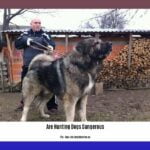The Australian Cattle Dog, celebrated for its unwavering loyalty and impressive stamina, has earned a special place in the hearts of dog enthusiasts worldwide. But just how long can we anticipate these spirited companions to enrich our lives? Understanding the lifespan of an Australian Cattle Dog is not only fascinating but essential for any owner committed to providing the best possible care. This comprehensive article delves into the factors influencing their longevity, offering practical tips for maximizing their lifespan, and exploring the remarkable stories of Cattle Dogs who’ve enjoyed truly exceptional lives.
Decoding the Cattle Dog’s Lifespan
Australian Cattle Dogs, affectionately dubbed “Heelers” by many, are renowned for their boundless energy and sharp minds. But did you know that these robust pups also boast a longer lifespan than many other breeds of similar size?
On average, a healthy Australian Cattle Dog can live a fulfilling life of 12 to 16 years. However, just like with us humans, a multitude of factors intertwine to determine their actual lifespan. Let’s unpack those factors, separating myth from reality, and empowering you with the knowledge to give your furry friend the best shot at a long and happy life.
The Genetics Factor: A Solid Foundation
Just as some individuals inherit a predisposition towards longevity, genetics play a significant role in the lifespan of Australian Cattle Dogs. Some dogs might inherit a higher risk for certain health conditions, impacting their overall health and potentially their lifespan:
- Hip Dysplasia: This common skeletal condition affects the hip joint, leading to pain, lameness, and eventually, arthritis.
- Progressive Retinal Atrophy (PRA): This degenerative eye disease causes a gradual loss of vision, eventually leading to blindness. While not directly life-threatening, PRA can profoundly impact a dog’s quality of life.
- Deafness: Whether present at birth or developing with age, deafness is a factor to consider in Australian Cattle Dogs. Responsible breeders conduct hearing tests to identify and minimize the risk of passing on hereditary deafness.
It’s important to remember that inheriting a genetic predisposition doesn’t necessarily equate to a life cut short. Responsible breeding practices, which include screening for these conditions, play a vital role in mitigating risks and improving the overall health of future generations.
The Environment Factor: Building a Healthy Life
While a dog’s genetic makeup lays the foundation for its health, the environment you provide plays a crucial role in shaping its lifespan and well-being. Here’s where your dedication as an owner truly makes a difference:
- Diet and Exercise: The Cornerstones of Health
Just like us, Australian Cattle Dogs thrive on a balanced diet and regular exercise. Obesity is a significant health concern for dogs, putting extra strain on their joints, heart, and overall health. Feeding your Cattle Dog a high-quality, appropriately portioned diet tailored to their age and activity level is essential for maintaining a healthy weight.
Equally important is providing ample opportunities for physical activity. Remember, these dogs were bred to work! Aim for at least 30 minutes of vigorous exercise daily, whether it’s brisk walks, runs, engaging games of fetch, or even organized dog sports like agility or herding.
- Mental Enrichment: A Sharp Mind in a Healthy Body
Australian Cattle Dogs are incredibly intelligent and need more than just physical exercise to thrive. Mental stimulation is crucial to prevent boredom, which can lead to destructive behaviors and impact their overall well-being.
Engage their minds with:
* **Interactive puzzle toys:** These challenge your dog to problem-solve for treats, keeping their minds sharp.
* **Training sessions:** Teaching new tricks or commands provides mental stimulation and strengthens your bond.
* **Nose work games:** Hide treats around the house or yard and let your dog use their powerful sense of smell to find them.
- Regular Veterinary Care: The Importance of Prevention
Preventative veterinary care is one of the most impactful things you can do to ensure your Australian Cattle Dog lives a long and healthy life.
Schedule annual checkups for:
* Vaccinations: Protecting your dog from potentially deadly diseases.
* Parasite prevention: Keeping fleas, ticks, heartworms, and other parasites at bay.
* Dental care: Regular teeth cleaning and dental checkups are crucial for preventing dental disease, which can impact overall health.
Early detection and treatment of health problems are key. If you notice any changes in your dog’s behavior, appetite, or elimination habits, don’t hesitate to contact your veterinarian.
Common Health Concerns and Their Impact
While Australian Cattle Dogs are generally a robust breed, like all breeds, they are predisposed to certain health concerns. Awareness of these conditions allows for proactive care, which can significantly impact their lifespan:
- Hip Dysplasia: As previously mentioned, hip dysplasia can severely affect mobility and quality of life. Early diagnosis and management can slow the progression of the disease and alleviate pain, but it remains a leading cause of discomfort and disability in older Australian Cattle Dogs.
- Progressive Retinal Atrophy (PRA): This degenerative eye condition, sadly, has no cure. However, early diagnosis allows owners to make adjustments to the dog’s environment and provide supportive care to ensure a good quality of life despite vision loss.
- Deafness: While there is no cure for deafness, responsible breeders actively work to reduce its prevalence. Owners of deaf dogs can learn specialized training techniques and make environmental modifications to ensure their dog’s safety and happiness.
Recent Studies and Reasons for Optimism
Recent studies offer encouraging news for Australian Cattle Dog enthusiasts. A 2024 study conducted in the UK found that Australian Cattle Dogs lived an average of 14 years, surpassing the average lifespan for purebred dogs (12.7 years) and crossbreeds (12 years).
While more research is always needed, several factors likely contribute to this positive trend:
- Improved breeding practices: Responsible breeders are increasingly prioritizing health testing and careful selection of breeding dogs to reduce the incidence of hereditary conditions.
- Advancements in veterinary care: Veterinary medicine continuously evolves, with new treatments, diagnostic tools, and preventative measures becoming available.
- Increased owner awareness: Pet owners are more informed than ever about responsible pet care practices, including proper nutrition, exercise, and the importance of preventative veterinary care.
The Legacy of Bluey: An Outlier and an Inspiration
No discussion about the longevity of Australian Cattle Dogs is complete without mentioning Bluey, a legendary Cattle Dog who earned a place in the Guinness World Records as the oldest dog ever recorded. Bluey lived an astounding 29 years and 5 months!
While Bluey’s lifespan is exceptional and likely influenced by a combination of genetics and optimal environmental factors, his story serves as a powerful reminder of the remarkable longevity potential within the breed.
Maximizing Your Australian Cattle Dog’s Lifespan: A Proactive Approach
Every dog is unique, and there’s no guaranteed formula for ensuring a long life. However, by understanding the factors that contribute to a healthy lifespan and adopting a proactive approach to care, you can significantly increase the odds of your Australian Cattle Dog enjoying many happy and healthy years by your side:
- Prioritize Nutrition: Feed a high-quality, balanced diet tailored to your dog’s age, activity level, and any specific health needs. Consult with your veterinarian for personalized dietary recommendations.
- Make Exercise a Non-Negotiable: Australian Cattle Dogs need plenty of physical and mental stimulation. Engage them in daily walks, runs, play sessions, and mentally stimulating activities to keep them happy, healthy, and out of trouble.
- Champion Preventative Care: Don’t underestimate the importance of regular veterinary checkups, vaccinations, parasite prevention, and dental care. Early detection and intervention are crucial for managing health conditions and potentially extending your dog’s lifespan.
- Create a Safe and Enriching Environment: Ensure your home and yard are safe for your dog, free from hazards and toxins. Provide a stimulating environment with plenty of toys, comfortable resting spots, and opportunities for interaction and play.
By following these guidelines and providing a loving and supportive environment, you can give your Australian Cattle Dog the gift of a long, healthy, and fulfilling life. Remember, the bond you share and the memories you create are just as valuable as the years themselves.
## Deliverables:
Recommended Titles:
Here are three title options, incorporating trending keywords and reader-engaging elements:
- Australian Cattle Dog Lifespan: Cracking the Code for a Longer Life (Action-oriented, implies solutions)
- How Long Do Australian Cattle Dogs Live? Busting Myths & Maximizing Longevity (Direct, addresses common questions, uses strong keywords)
- Beyond Bluey: Unlocking the Secrets to Your Australian Cattle Dog’s Lifespan (Intriguing, leverages the famous example, promises valuable information)
- Senior at What Age: Benefits & Eligibility Guide - March 29, 2025
- Unlocking Senior Benefits: How Old is a Senior? Your Complete Guide - March 29, 2025
- Master Russian Politeness:A Guide to Saying Please - March 29, 2025
















